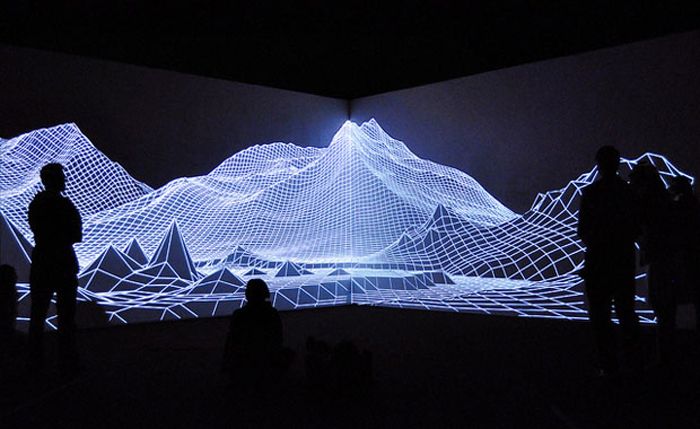Guest Post: Trade Show Trends and Tactics for 2019

Trade show exhibitions aren’t just an important B2B marketing strategy in certain regions—they are a reliable tactic all over the world. This is a multi-billion dollar a year marketing initiative, generating over 13 billion dollars in 2017 in the United States alone. And on the global scene, trade show organizers from Germany to the UK are raking in hundreds of millions of euros annually. Moreover, the second-largest segment of the B2B media market is trade shows, a market that’s projected to enjoy an annual growth rate of over 4% through 2022.
The question then becomes how best to leverage this marketing tactic to maximize visibility within your industry and thus generate greater ROI. Well, the secret lies in the trends. Capitalizing on trends that are poised to define the trade-show-exhibition market is key to success or failure. Below, we list the major trends you can expect to see in 2019.
Experiential Booth Design
Ever since the inception of trade-show exhibits, the “wow factor” has been crucial to this marketing strategy. It was understood that sales teams needed to put together a killer booth to draw as many attendees as possible. Then once visitors were wowed, reps could deliver their sales pitch.
But audiences are changing. Millennials and post-millennials want more than to be wowed—they want a show. The term “festivalization” has been tossed around recently and it’s more than a fleeting trend. Creating an incredible booth that focuses on the overall experience as opposed to merely the product demo is a strategy that’s here to stay. That means designing a hybrid festival/booth exhibit that focuses not only on visuals and sound effects, but incorporates other senses like touch and even smell.
Few B2B operations have more effectively leveraged this trend than Caterpillar. The global leader in industrial equipment made quite a splash at the MINExpo when they unveiled a trade show space to end all trade-show spaces. There were interactive displays that led visitors from exhibit to exhibit, answering questions and easing pain points along the way. They showcased new equipment and let visitors get behind the wheel of giant tractors and drive them, giving potential customers a literal feel for the power of the machinery.
The point is, the more you can get your target audience to interact with your product or service, the more qualified leads you will generate, particularly if you incorporate a multi-sensory experience.
Projection Mapping
Flat-screen TVs strategically positioned in your booth will no longer engage audiences the way they did 10 years ago. The trend right now involves harnessing the light and delivering visual stimuli in three dimensions. Projection mapping is still a great way to accomplish this, as it allows you to virtually transform the physical surfaces of your booth into imagery that provides today’s audiences the overall sensory experience they crave. Of course, there are ways to do this effectively, and best practices include:
-
- Reviewing the layout plans for your booth and understanding the location and dimensions of your surfaces as well as where they are in relation to your booth audience
-
- Utilizing 3D mapping software that will map to any surface no matter the angle, curve, or corner, and that has the ability to sync with sound systems and send HD video and renderings in real time to various projectors
- Ensuring your 3D mapping effects are an extension of the theme of your booth, and are not needless visual noise
That isn’t to say you shouldn’t get creative with your effects. Regarding branding, it’s possible to project your company logo over various surfaces in your booth. Done subtly enough, you’ll be able to leave attendees with the visual impression of your business long after they leave the booth.
Augmented-Reality Mobile Apps
To round out your booth, you’ll want to invest in the technology that can further immerse your audience in the experience. As mentioned above, interactivity is one of the keys to an effective experiential trade-show exhibit. It involves augmenting the real-world booth environment with digital elements to enhance the experience. There’s a wide variety of these elements, and they include:
-
- Tablets and smartphones connected to mobile apps that allow attendees to interact with products
-
- QR codes attendees can scan to receive information about a particular product or service
- Smart glasses that receive specific info regarding what the attendee is viewing at any given time
Whether you utilize one or all three of the above AR strategies depends on the type of experience you wish to create, as well as what is most compatible with your industry and product.
Conclusion
These are just some of the event marketing tools and trends that are going to define trade-shows now and into the foreseeable future. There are other trends on the horizon, too. Virtual reality, for example, is a popular bit of tech that utilizes headsets to transport users into entire digital worlds. VR devices like Oculus Rift and Google Cardboard are great ways to turn a typical product demo into a fully immersive experience that your booth attendees won’t soon forget.
Author: Scott Miraglia
EventsAir has been at the forefront of Event Technology and Innovation for over 30 years, continually pushing the boundaries of what an event management platform can do. Built by event planners for event planners, EventsAir is a secure, scalable, cloud-based solution that can manage everything from in-person, virtual to hybrid conferences, meetings and events in a single online platform – anywhere, anytime and on any device. In use in over 50 countries by multi-national corporations, professional conference organizers, government departments and tertiary education institutions, EventsAir is also used in global congresses such as G20, APEC, CHOGM and ASEAN, as well as sporting events like The Olympic Games, World Rugby, Commonwealth Games and Pan Am Games. EventsAir is trusted by event professionals around the globe. For further information, visit www.eventsair.com




